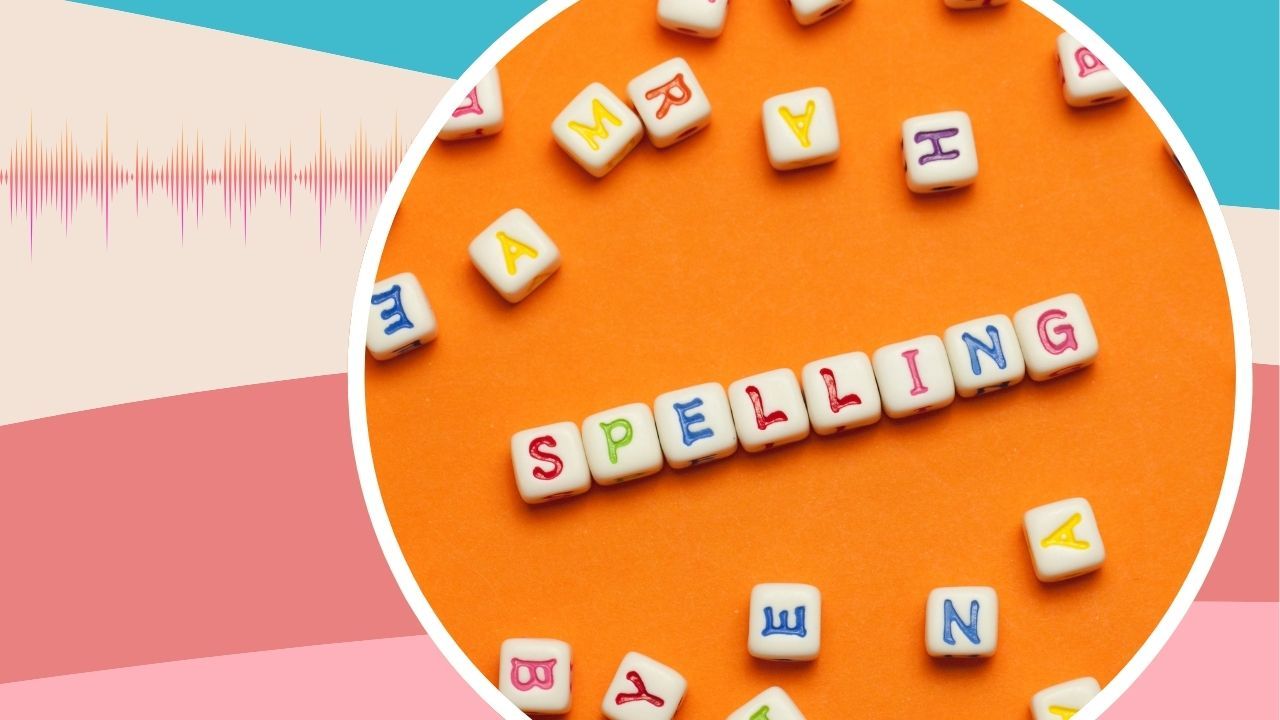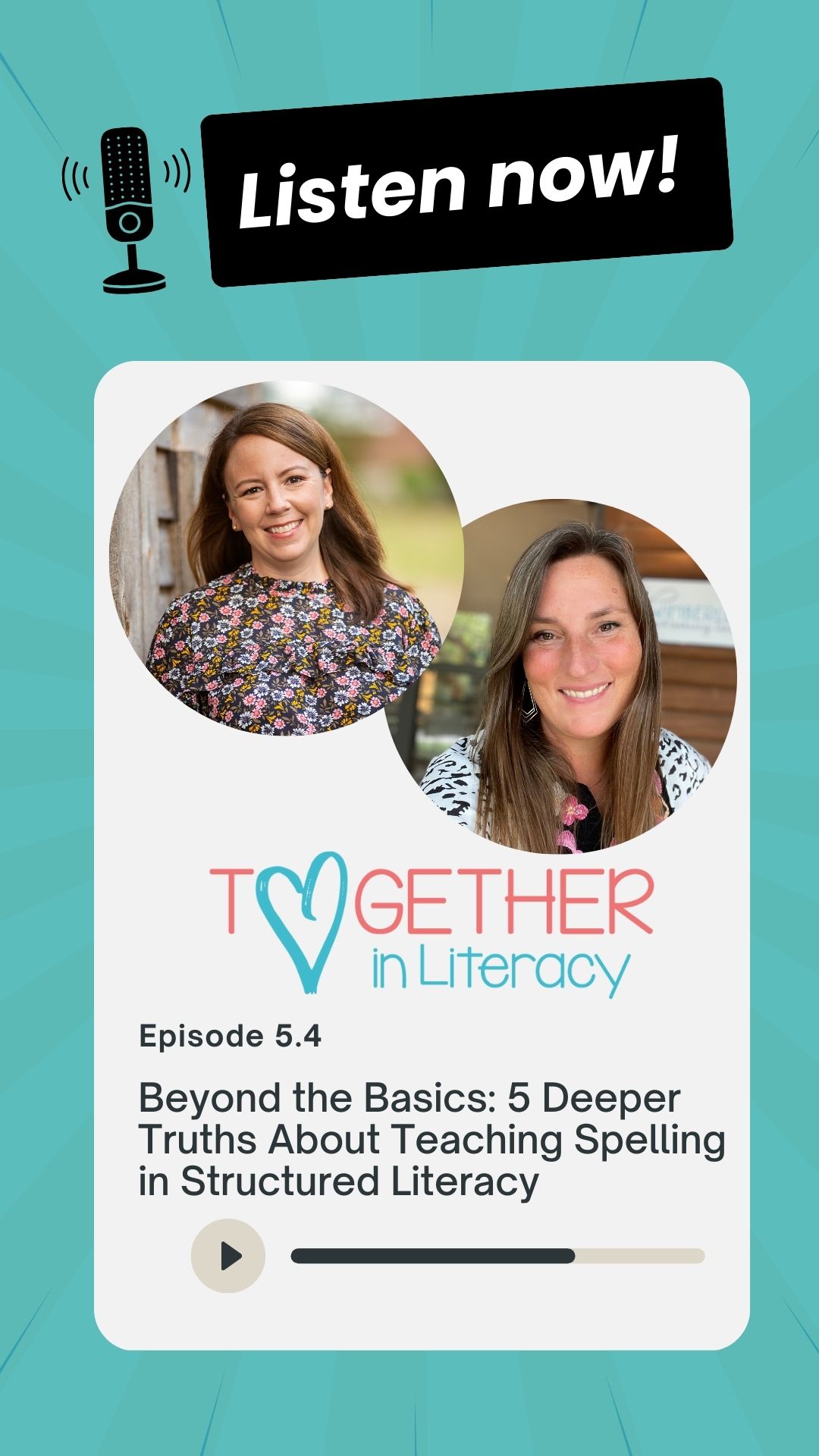Going Beyond the Basics: Five Deeper Truths About Spelling Instruction

Most of us already know the essentials for spelling: it isn’t about memorization, phoneme-grapheme mapping matters, generalizations are more useful than rigid rules, and morphology ties it all together.
But if you’re an interventionist or a structured literacy educator, you know that spelling is often where your students’ struggles show up most clearly. It’s the place where gaps in phonology, orthography, and morphology all converge—and where instruction has to go deeper.
Before we dig into our top five truths, let’s start with an essential prerequisite: assessment.
Start with a Spelling Assessment
Whether formal or informal, a spelling assessment is your roadmap. It helps you identify what your students already know and what needs strengthening.
A few popular assessments include the Words Their Way spelling assessment, the Barnell Loft spelling assessment, and the Neuhaus assessment.
You can use norm-referenced tools or informal writing samples—what matters is how you analyze them. Look for patterns of errors and inconsistencies, especially common among dyslexic learners. Are the errors phonological (sound-based), orthographic (pattern-based), or morphological (meaning-based)?
Essential Foundational Skills Need to Be Explicitly Taught
There’s one more thing before we jump into our five truths. Before we can expect students to become accurate and confident spellers, we must ensure they have strong foundational skills. These include:
- Phonological and phonemic awareness – recognizing, segmenting, and manipulating sounds within words.
- Alphabetic principle – understanding the relationship between phonemes (sounds) and graphemes (letters).
- Letter formation and handwriting – writing fluently and legibly supports memory and reinforces orthographic mapping.
Explicit instruction and consistent practice in these areas give students the base they need to move from isolated sounds to connected spelling patterns.
Ok! On to the list.
Five Deeper Truths About Spelling Instruction:
1. Orthographic Mapping Is a Mental Process
Phoneme-grapheme mapping activities are important, but the real learning happens in the mind. Orthographic mapping is the internal process of linking sounds to letter sequences so words become permanently stored for quick retrieval.
Some students may map a word after three exposures; others may need thirty. What matters is designing instruction that provides multiple, meaningful, spaced opportunities for retrieval and application.
To support this mental process, build automatic sound-letter associations, strengthen phonemic proficiency, and make sure students can pronounce and analyze words accurately. That’s what wires spelling into long-term memory.
2. Spelling Instruction Must Be Systematic, Prescriptive, and Cumulative
Effective spelling instruction is never random or list-based—it’s diagnostic, responsive, and cumulative.
When a student spells chick as chik, that’s not a simple mistake, it’s information. It tells us where their understanding breaks down. Are they missing a phoneme? Do they need more practice with the -ck generalization?
Instruction should build from simple to complex and constantly spiral back for review. Keep skills alive with sound decks, dictation, and ongoing assessment. Remember, a concept mastered once can easily fade if it’s not reinforced through cumulative practice.
3. Prioritize High-Utility Spelling Generalizations
Instructional time is limited, so focus on what gives students the biggest return. Teach high-utility generalizations—like the FLOSS rule, doubling rules, and vowel-consonant-e patterns—before low-utility “rules” with many exceptions.
When students understand how sound positions and surrounding letters influence spelling, they can apply that knowledge flexibly across hundreds of words. Activities like spelling sorts (e.g., ai vs. ay) provide powerful, hands-on practice connecting phonology, orthography, and morphology.
4. Morphological Awareness Starts Early
Morphology isn’t something to save for upper grades—it should be embedded from the start.
Even young learners can notice how jump becomes jumped or how sign connects to signal and signature. These insights strengthen both spelling and vocabulary.
Teach the “Big Three” suffixing rules—doubling, dropping, and changing—to help students understand how base words combine with suffixes. Morphological instruction not only supports accurate spelling but also deepens comprehension and word meaning.
5. Dictation Is a Non-Negotiable
Dictation ties everything together—phonology, orthography, morphology, and syntax.
After introducing a pattern such as -tch, you might dictate a sentence like, “I will catch the big fish.” As students progress, expand to short paragraphs to promote generalization.
Dictation time is also observation time. Watch how students approach spelling, prompt them to verbalize their thinking, and note any errors to inform your next lesson. This step helps students become more metacognitive and takes learning from isolated practice to authentic application.
Looking for strategies and resources?
Sign up for our newsletter for news, resources, and freebies delivered straight to your inbox.
We hate SPAM. We will never sell your information, for any reason.
